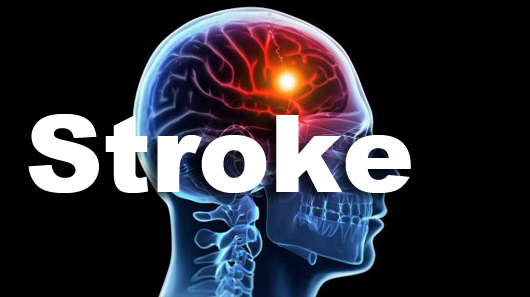Stroke
 |
Stroke
A stroke is caused by similar conditions as a heart attack: stroke often occurs when a clot prevents oxygen and glucose from reaching the brain. It can also be caused by a hemmorhage in the brain. It is an extremely serious condition that can result in death and significant disability.
There are three basic types of stroke:
- Transient Ischemic Attack (TIA): A TIA is often called a "little stroke" or "mini stroke." It occurs when an artery in the brain is temporary blocked. During the blockage, stroke-like symptoms can occur for just a few seconds or for a few hours.
- Ischemic Attack: Ischemic strokes occur when a blood vessel is blocked or narrowed by fatty deposits called plaque. Blood cells can build up around the plaque and form a clot, stopping the flow of blood to the brain.
- Hemorrhagic Stroke: This type of stroke is quite rare; but, occurs when a blood vessel in the brain breaks and blood leaks into the brain. The blood leaking into the brain kills cells and prevents other cells from receiving the blood they need to stay alive.
Stroke Symptoms
Usually, symptoms of stroke are fairly noticeable because they happen quickly. Learn to recognize the warning signs so that you can seek immediate treatment:
- Sudden numbness or weakness of the face, arm or leg - especially on one side of the body
- Sudden confusion, trouble speaking or understanding
- Sudden trouble seeing in one or both eyes
- Sudden trouble walking, dizziness or loss of balance or coordination
- Sudden, severe headache with no know cause.
Sometimes symptoms may only last a few moments and then disappear. Even if they last for only a short period, they should not be ignored. If not treated, "mini-strokes" can be followed by more severe strokes that can cause permanent disability, death or a coma.
Stroke Chain of Survival
The chain of survival for stroke is referred to as the "Seven D's." The Seven D's of stroke care, as well as the major actions to be performed in each step are:
- Detection of the onset of signs and symptoms of acute stroke. Early recognition of hallmark signs and symptoms of acute stroke is critical to improved patient outcomes.
- Dispatch of EMS by calling 9-1-1 or your local emergency response number. This communication activates EMS systems and ensures prompt EMS response.
- Delivery of the patient to a medical facility. It is preferable to have the patient transmitted to a stroke hospital or other facility capable of providing acute stroke care. Advanced pre-hospital notification should be given to the selected medical facility.
- Door of the emergency department (ED). Immediately upon arrival the patient should undergo general and neurologic assessment.
- Data collection, including computer tomography (CT) scan and serial neurologic exams, along with reviews of the patient file for potential fibrinolytics (tPA) exclusions.
- Decision regarding stroke treatment.
- Drug administration, as appropriate, and post-administration monitoring. The window for administering treatment after a stroke is very limited. From the onset of stroke to the administration of treatment at a hospital or other medical facilities, the Institute of Neurological Disorders and Stroke (NINDS), a branch of the National Institutes of Health (NIH), recommends no more than three hours elapse to ensure improved patient outcomes and maximize the chance of stroke survival. "Time is brain" is more than a catchphrase - it is a call to arms in acute stroke care.
| Back: Heart Attack | Home |

